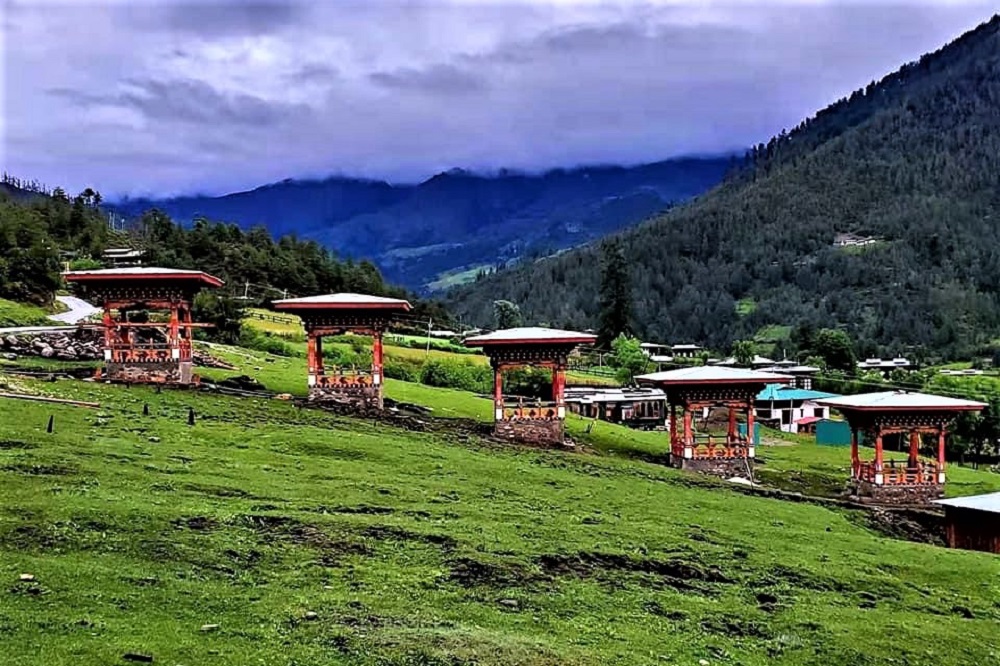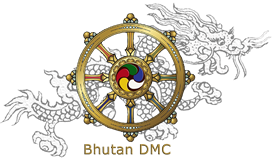Haa – A heavenly place adorned with pristine alpine forests and majestic mountain peaks

Blessed with incredible natural beauty, Haa valley is the smallest district in the country, spread over an area of 1905 square km and also the second least populated district in the country. Located Southwest of Paro, only about two-and-a-half hour drive from Paro international airport, it is one of the most exotic valleys in the country, opened for foreign tourists only in 2002.
Haa district lies along with western border of Bhutan, bounded by Tibet to the northwest, to southwest bounded by Samtse district, to the southeast by Chukha district and to the northeast by Paro district. Historically, it used to be one of the main trade route to Sikkim, India and Chumbi valley in Tibet.
Haa’s major feature is the Haa valley, a steep north-south valley with a narrow floor. Also known as ‘Hidden-Land Rice Valley’, it is one of the most beautiful and isolated areas in Bhutan, adorned with pristine alpine forests and majestic mountain peaks. The vegetation in the district varies from broad leaved forests in the southern part to coniferous and sub-alpine vegetation in the central and alpine vegetation in the highland. The region comprises of the Toorsa strict nature reserve, one of the environmentally protected area of Bhutan.
The altitude in Haa district ranges from 2000 – 5000 meters and over 250 species of plants including the blue poppy (the National flower of Bhutan) and white poppy (Mecopnopsis Superba) which is endemic to Haa, thrive here. Many endangered animal species like the Bengal tiger, the elusive snow leopard, the Himalayan black bear, Himalayan musk deer, blue sheep, grey Langurs and the Himalayan marmots make the Haa district home. Over 45 different bird species have been identified here including chestnut-breasted partridges, wood snipe, Rufous-necked hornbill, Himalayan Monal, and satyr tragopan.
Haa is the ancestral home of the Queen Grandmother and the illustrious Dorji family. Alongside Buddhist practices, the people of Haa practice shamanistic traditions also. The most significant of the shamanistic traditions is the annual ceremony to honour the guardian deity of the valley – Ap Chhundu. The people of Haa also celebrate their new year – known as Lomba – much earlier than people in other parts of country.
Haa is also home to a number of nomadic herders and hosts an annual ‘Haa summer festival’which is a lively celebration of the mix of traditional living-culture, nomadic lifestyles, unique Bhutanese cuisines, traditional sports and religious performances. It provides insight into the lives and traditions of Bhutan’s nomadic herders. This festival offers an opportunity to immerse oneself in all kinds of experiences by playing the local sports, enjoying delicious home-cooked cuisines and enjoying traditional songs and dances.
Majority of people in Haa depend on livestock and trading. In the temperate region, they grow wheat, barley, turnip, and potatoes. Being partly a home to yak, the people of Haa sing ‘Ausa’ a traditional song which extols the virtues of their yaks. Nublang is an indigenous breed of cow and is procured all over Bhutan to cross breed with other species of cow.
Places of Interest in Haa Valley
Lhakhang Karpo
Also known as ‘White temple’, Lhakhang Karpo was established in 7th century by Tibetan King Songtsen Gempo in his mission to built 108 monasteries in one day. According to legend, a white and black pigeon were released to select the site for temples and the white pigeon landed on the foothills of the three towering mountains worshipped as Rigsum Gonpo and is where Lhakhang Karpo stands today.
Lhakhang Nagpo
Situated towards north of Lhakhang Karpo and located in Dumchoe village, Lhakhang Nagpo also known as Black temple was established in the 7th century by Tibetan King songtsen Gampo. Lhakhang Nagao & Lhakhang Karpo stands as guardian sentinels keeping watch at the south entrance of the valley.
Chhundu Lhakhang
It is one of the several shrines dedicated to the protective deity of Haa valley, Ap Chhundu. The chapel is a five-minute walk down a concrete path below Lechuna village.
HOTELS IN THIMPHU
HOTELS IN PUNAKHA & WANGDUE
HOTELS IN GANGTEY
HOTELS IN TRONGSA
HOTELS IN BUMTHANG
HOTELS IN MONGAR
HOTELS IN TRASHIGANG
HOTELS IN SAMDRUP JONGKHAR
HOTELS IN PHUENTSHOLING
HOTELS IN HAA
HOTELS IN GELEPHU
HOTELS IN ZHEMGANG
RESTAURANTS IN PARO
RESTAURANTS IN THIMPHU
RESTAURANTS IN PUNAKHA
TOUR ITINERARIES
TREKKING ITINERARIES
SPECIAL INTERESTS TOURS
UNIQUE FESTIVALS & FAIRS
BLOG


